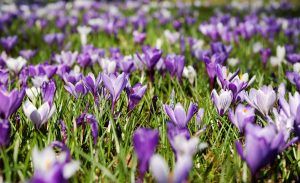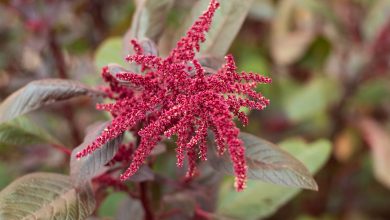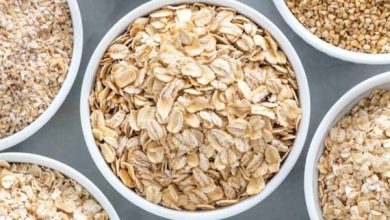Crocus: [Planting, Care, Irrigation, Substrate and Pests and Diseases]

 The crocus is a kind of plant that offers abundant flowering, with very striking colors. However, it is a fairly small plant.
The crocus is a kind of plant that offers abundant flowering, with very striking colors. However, it is a fairly small plant.
This condition leads ornamental designs within the garden to be based on several specimens gathered together, so that when they bloom they cause a great impact.
It is a plant that is worked by sowing through bulbs and that has specific development conditions, but not difficult to meet.
Do you want to know more details about this species and give your garden a beautiful flowery environment?
Keep reading
Important points when planting Crocus
- When? in autumn.
- Where? In an open space with shade or semi shade.
- How do we prepare the land? Ensuring good drainage and sufficient organic matter.
- How should we water? Moderately.
- How often do you have to water? Only when the ground is dry. Once or twice a week.
- What pests and diseases does it have? Moles and fungus product of humidity.
crocus characteristics
 Crocus is a genus of flowering plants in the iris family comprising 90 species of perennial plants that grow on corms.
Crocus is a genus of flowering plants in the iris family comprising 90 species of perennial plants that grow on corms.
Many are grown for their flowers that appear in fall, winter, or spring.
The spice saffron is obtained from the stigmas of Crocus sativus, a species that blooms in the fall.
Crocuses are native to forests, shrublands, and grasslands from sea level to alpine tundra in North Africa and the Middle East, central and southern Europe, particularly Krokos, Greece, in the Aegean Islands, and throughout Central Asia to Xinjiang province in western China.
When to sow the crocus?
The appropriate time for the bulbs to begin their growth process is during the fall.
Where to plant a crocus?
- The place chosen for their sowing will not represent any problem, since they can do well in both full sun and semi-shade.
- This also gives freedom to have them both in the garden soil and in pots.
- Depending on the environmental conditions, the crocus can resist very low temperatures, down to -20º C.
How to prepare the land?
 The crocus is very adaptable when it comes to types of soil, being able to survive even in very poor versions.
The crocus is very adaptable when it comes to types of soil, being able to survive even in very poor versions.
But since the idea is that they generate excellent flowering, it is best to offer them the most suitable conditions.
These conditions include: good drainage and soil that is not compacted.
In both cases, the addition of a layer of sand in very clay soils will do the job.
In addition, it is a good plan to incorporate organic matter at a time prior to planting so that they obtain the necessary nutrients.
How do we water the crocus?
- The crocus does not need a lot of humidity to be in perfect condition, so it is not advisable to take great care in this regard.
- Ideally, use a moderate water flow system and apply directly to the base of the plant.
- Thus, these will be able to better collect moisture and take advantage of it for internal distribution.
- It should be noted that the crocus could suffer a collapse known as root suffocation if it is affected by excess moisture.
How often do we water?
Irrigation may be established once or twice each week.
However, it is important to mention that these risks are not mandatory, but must respond to the real needs of the environment.
It means that they will only be applied in cases where the soil looks dry. The rest is unnecessary.
What is very important to note is that no puddles of any kind are generated.
How to plant the crocus step by step?
The sowing of the crocus is done by means of the small bulbs that the plant itself throws up in each cycle.
These can be placed in pots or in the garden and as they are so small it is possible to work with several at once.
So, the step by step will be like this:
- Prepare the ground according to the guidelines given in the previous sections.
- Drill holes to place the bulbs. The crocuses should be left at a depth of between 5 and 6 centimeters.
- Place the crocuses ensuring that the tip of the bulb is facing the top.
- Cover with enough soil to ensure they are well covered.
- Water properly so that the soil reaches a good level of humidity. It is only in this first phase that it may be necessary to add more water because it is necessary for it to penetrate to the interior.
When planting in pots, the ideal is to place each bulb approximately 5 cm apart.
If planting is in the garden and the space is large, this distance could vary up to 15 cm.
Even in very large spaces where you want to have a large crop, they can be planted without much planning to make it more natural.
What care does the crocus need?
After the crocus has been planted following the instructions described above, its needs and care decrease considerably.
For example, the preparation of the land with organic matter at the beginning will be more than enough to cover its successive requirements.
So you will not need further fertilization.
On the other hand, the plant does not have such exposed parts that they need to undergo pruning.
In any case, after flowering it is possible that the leaves wither, which is normal.
It is at this point that the unusable parts can be removed to allow the bulb to recover enough energy and thus produce a better flowering in the following period.
What pests and diseases affect the crocus?
It is not very common for the crocus to be attacked by pests and diseases, but if there is a history in the area, it is necessary to pay attention.
The moles
For example, moles are capable of devouring bulbs because they maintain a life underground.
Certain types of fungi could also affect, especially when they are in a field that does not meet the requirements already exposed.
One of the things that motivates the most to have crocuses at home is that its flowering is extremely fast, being able to see the first flowers in a month.
In addition, this is done as soon as the surrounding soil begins to have a higher temperature, so that almost at the end of winter there will be a living environment.
To make the environment shine with blooms for longer, a good plan is to make staggered plantings.
Specialists recommend that these be carried out until December, so with good planning it will be possible to take advantage of the entire period.
The crocus family is numerous and one of its best known versions around the world is saffron.
This versatility allows blooms to be grown in almost any color, creating beautiful and eye- catching ornamental designs.




